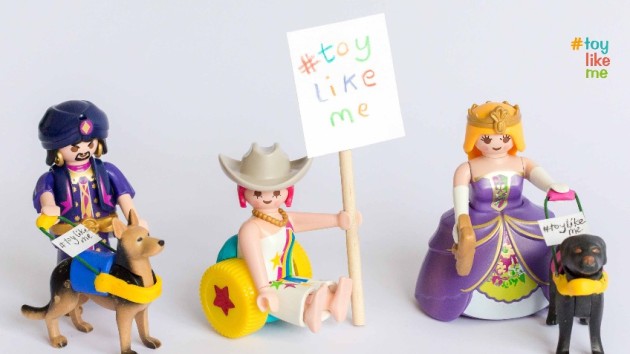
by admin
Dolls with Disabilities
 Remember wanting a doll that looked just like you? Children with visible disabilities, including kids who wear hearing aids, use wheelchairs, or have had amputations, haven’t had that option — until now. #ToyLikeMe, a social media crowd-funding campaign, was launched in April 2015 by UK journalist Rebecca Atkinson to combat the lack of representation of disability in the toy industry. Atkinson and the many parents who joined the campaign began by making over existing dolls and figurines to give them disabilities, and they called on the public to send in photos of their own improvised, DIY dolls with disabilities. Spurred on by massive public support and news coverage, #ToyLikeMe approached British doll manufacturer Makie, which then created the world’s first 3D-printed dolls with disabilities.
Remember wanting a doll that looked just like you? Children with visible disabilities, including kids who wear hearing aids, use wheelchairs, or have had amputations, haven’t had that option — until now. #ToyLikeMe, a social media crowd-funding campaign, was launched in April 2015 by UK journalist Rebecca Atkinson to combat the lack of representation of disability in the toy industry. Atkinson and the many parents who joined the campaign began by making over existing dolls and figurines to give them disabilities, and they called on the public to send in photos of their own improvised, DIY dolls with disabilities. Spurred on by massive public support and news coverage, #ToyLikeMe approached British doll manufacturer Makie, which then created the world’s first 3D-printed dolls with disabilities.
Since then, #ToyLikeMe has successfully petitioned Playmobil, which will release its #ToyLikeMe-inspired products in 2016/17. Lego was next on the list. In her Change.org petition, which has over 20,000 supporters, Atkinson asks: “Oh Lego, where are your basket balling wheelsters? Baseball playing Duplo folk with hearing aids? White cane using Lego Friends off to the gym? In fact, where is your positive disability representation at all?” Lego recently responded to the #ToyLikeMe petition with the release of the company’s first wheelchair-using minifigure, which comes with a mini guide dog. Go to crowdfunder.co.uk/toylikeme-celebrating-disability-in-toys to support #ToyLikeMe’s amazing effort to bring disability into the toy industry.